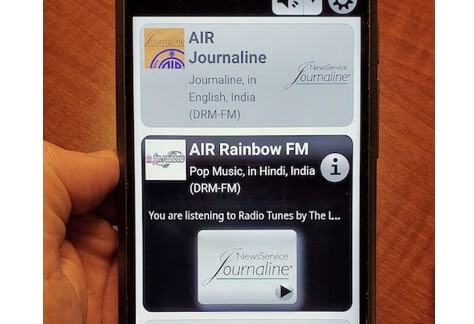Fraunhofer IIS and Sinclair Broadcast Group are joining forces to bring Digital Radio Mondiale digital radio content to stand-alone radio and TV sets, mobile phones and in-car receivers.
Fraunhofer IIS is the primary developer of the xHE-AAC audio codec and long-time member of the ATSC as well as the Digital Radio Mondiale consortium. Media company Sinclair Broadcast Group is a provider of local sports and news in the United States.
DRM is the open ITU-endorsed radio standard and a digital successor to the classic analog AM and FM band broadcast services. It offers listeners a next-generation radio experience, based on xHE-AAC, and using Journaline, the on-demand information service with hybrid interactive functionality.
The collaboration of Sinclair and Fraunhofer IIS aims to establish the seamless transport of DRM-based services with all their advanced digital radio features on the ATSC 3.0 TV platform. DRM broadcasters would be able to create the DRM content once and then distribute it simultaneously via dedicated digital AM/FM transmissions and on the digital TV platform. Listeners could access the content via a variety of broadcast platforms using any reception device — from stand-alone radio and TV sets to mobile phones and in-car receivers.
“Both the ATSC 3.0 digital TV and the DRM digital radio standards are really gaining momentum all over the world,” said Alexander Zink, senior business development manager for Broadcast Applications at Fraunhofer IIS. “On air in South Korea since 2017 and with the recently started rollout in the US, the ATSC 3.0 TV standard has proven to be a success. It also receives growing attention in more and more countries worldwide including India. The same holds true for DRM digital radio, which is adopted in a steadily growing number of countries all over the world. Bringing the rich digital radio experience of DRM to the innovative ATSC TV platform is a perfect win-win situation for users and broadcasters alike,” commented Zink.
Sinclair Broadcast Group and Fraunhofer IIS have identified benefits for all stakeholders resulting from this tight technology integration, which deploys DRM as the common digital radio solution across multiple transmission platforms. The partners are preparing a demonstration to showcase how this works.
This joint project is expected to open the door to close collaboration between the respective standard bodies, the ultimate goal being the adoption of both standards worldwide for the benefit of broadcasters and listeners alike, noted a press release from Fraunhofer.
“Radio is in everyone’s life on a daily basis,” stated Mark Aitken, SVP of Sinclair Broadcast Group and president of ONE Media 3.0 LLC. “Bringing audio services to the ATSC 3.0 platform with its advanced interactive environment and to our ‘MarkONE’ mobile phone adds new life and opportunities to a timeless medium as well as addressing ‘Direct to Mobile’ market segments easily. With the efficiency of the DRM platform’s xHE-AAC audio codec, it is possible to offer hundreds of audio services to answer the needs of diverse audiences and cater for multilingual, multicultural or diverse tastes. And by combining these classic radio services with innovative radio applications such as Journaline, the needs of new market segments can be easily addressed.”

